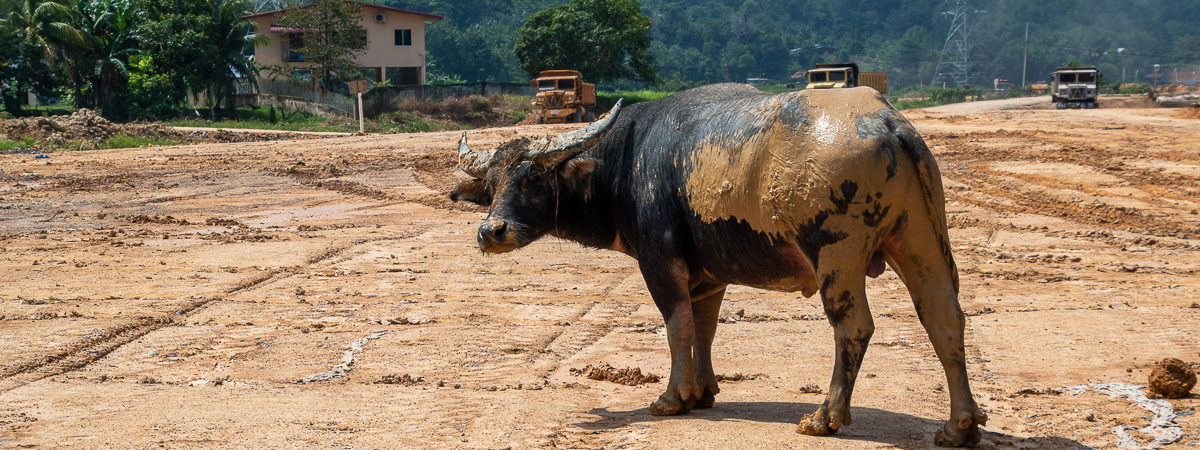Mongabay is seeking pitches for stories on the potential social and environmental impacts of road and rail projects in Indonesia, Malaysian Borneo and Papua New Guinea. Proposals for both news bulletins and in-depth investigations are welcome.
Indonesia, Malaysia and Papua New Guinea all have plans to expand their transport networks, often into areas that currently have intact and highly biodiverse ecosystems.
These plans are in line with a global trend of promoting infrastructure spending. At the 2014 G-20 summit, the world’s 20 wealthiest countries vowed to mobilize $60-70 trillion worth of investment in new infrastructure projects worldwide, roughly doubling the value of global infrastructure within 15 years. Many of these projects are targeted at the developing world, including millions of kilometers of roads.
Governments and international funders credit such projects with boosting economic growth and human wellbeing by enabling trade and economic integration and linking remote communities to health and education services. But what is the other side of the story?
Road projects can have significant direct impacts by razing forests, fragmenting ecosystems and disrupting traditional land-tenure systems and ways of life. They also have additional knock-on effects, often literally paving the way for logging, poaching, mining and increased human settlement in wilderness areas.

Projects of particular interest include: the Trans-Kalimantan, Trans-Sumatra and Trans-Papua highway networks in Indonesia; Malaysia’s Pan-Borneo highway; and the Highlands Highway and planned Madang-Baiyar and Vanimo-Wewak linkages in PNG.
Journalists are expected to consult with various stakeholders, including social and environmental NGOs, scientists, officials, and local communities.
In addition to print stories, we are seeking fully produced short documentaries (3+ minutes) as well as video clips Mongabay can edit in-house for use on social media. Videos should include interviews with experts and officials and/or people involved in or affected by road and rail projects, as well as contextual footage such as images of road construction, forest clearing, wildlife, traffic and daily life in remote communities.
Completed print stories will be published in English on Mongabay.com under an open Creative Commons license that allows for sharing and re-posting. They could also potentially be translated into other languages and published by Mongabay.
Authors of print stories will be expected to provide 5-10 publishable photos (either original, provided by those interviewed, or found free of copyright restrictions online) to accompany their articles, along with captions and photo credits.
Mongabay will negotiate fees and contracts for video and print submissions on a per-story basis, depending on the journalist’s experience and the complexity of the reporting. Funds are available to defray local/regional travel costs.
How to submit your story pitch
To send Mongabay a pitch, please be prepared to also share your resume/portfolio along with three samples of your work. The story pitch should be roughly 500 words in length and include a title for the project. Viable pitches will clearly explain the specific road or rail project you would like to write about and its ecological or social impacts. Please also explain your approach to covering it and describe a few potential sources. For stories involving travel, please include a rough travel plan including approximate travel expenses. If you are proposing a story that is led by video, please indicate that and include a short description of your video idea. Pitches for video-led stories should also include an expected shot list and interviews.
Please review the complete guidelines on what to include in your pitch here: https://mongabay.org/programs/news/opportunities/
Please submit your pitch here along with your journalism resume and three clips.
All pitches must be submitted in English, and all final reporting will be published first in English. However, Indonesian-language journalists are encouraged to pitch stories in Bahasa Indonesia to Sapariah Saturi, one of our Indonesian editors.
Pitches will be considered on a rolling basis, or when our budget is disbursed.